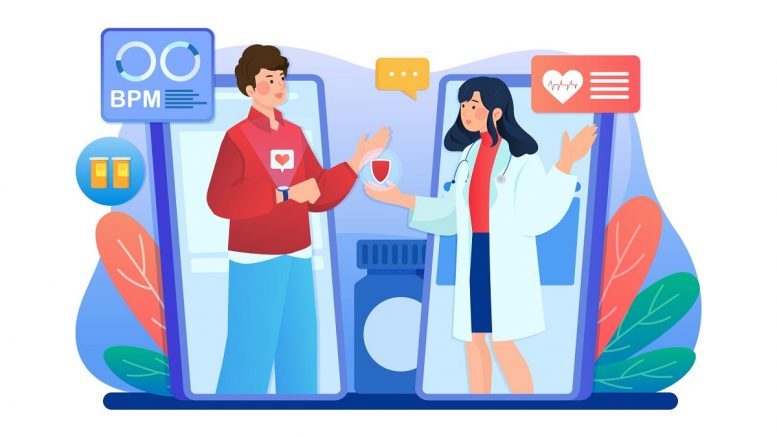To provide quality healthcare, streamlining patient onboarding is a crucial step that healthcare facilities must prioritise. By optimising admitting and registering patients, healthcare providers can enhance care delivery, reduce administrative burdens, and improve patient satisfaction. One effective solution to achieve this is implementing patient intake software.
The Importance of Streamlining Patient Onboarding
Efficient patient onboarding plays a significant role in delivering timely and effective care. By streamlining the process, healthcare providers can minimise waiting times, eliminate redundant paperwork, and ensure accurate patient information. This streamlined approach benefits the patients and empowers healthcare professionals to focus more on patient care than administrative tasks.
-
Enhancing Efficiency and Reducing Wait Times
Healthcare facilities can significantly improve efficiency and reduce patient wait times by implementing patient intake software. This software automates the registration process, allowing patients to complete their forms digitally before their visit. This eliminates the need for manual paperwork and reduces the time spent on data entry. Additionally, the software can notify healthcare providers of patients’ arrival, enabling a more streamlined workflow and minimizing delays.
-
Improving Accuracy and Data Integrity
Manual data entry is prone to errors, leading to potential complications in patient care. Patient intake software eliminates the need for manual data transcription, minimizing the risk of errors and ensuring data integrity. The software can also validate the information entered by patients in real-time, prompting them to review and correct any inconsistencies. This results in accurate and up-to-date patient information, vital for delivering personalized and effective care.
-
Enhancing Patient Engagement and Experience
Patient intake software empowers patients to actively participate in their healthcare journey. They can conveniently provide their medical history, current symptoms, and other relevant information by providing them with digital forms and questionnaires. This enables healthcare providers to comprehensively understand the patient’s condition even before the initial consultation. Moreover, patients appreciate digital forms’ convenience and time-saving aspects, contributing to a positive patient experience.
-
Strengthening Data Security and Compliance
Patient confidentiality and data security are paramount in healthcare. Patient intake software ensures that patient information is securely stored and transmitted. It provides encryption protocols and access controls, safeguarding sensitive data from unauthorized access. Additionally, these software solutions often adhere to regulatory standards such as the Health Insurance Portability and Accountability Act (HIPAA), ensuring compliance with privacy regulations and protecting patient rights.
-
Seamless Integration with Electronic Health Records (EHR)
Patient intake software can seamlessly integrate with the facility’s Electronic Health Records (EHR) system. This integration ensures that the patient’s data collected during onboarding is automatically transferred to their medical record. It eliminates the need for duplicate data entry, reduces the chance of data discrepancies, and provides a comprehensive view of the patient’s medical history for healthcare providers. This streamlined integration promotes continuity of care, as all relevant information is readily accessible to the care team.
-
Customisable Questionnaires and Consent Forms
Patient intake software allows healthcare facilities to create customisable questionnaires and consent forms. This flexibility enables them to tailor the intake process to the specific needs of their practice or specialty. For instance, different medical departments may require distinct questions to accurately capture relevant information. Additionally, consent forms can be digitised and electronically signed, further streamlining the patient’s experience while adhering to consent requirements.
-
Appointment Reminders and Patient Communication
Patient intake software can be integrated with appointment scheduling systems to send automated reminders to patients about upcoming appointments. These reminders reduce the likelihood of no-shows, optimise patient flow, and maximise healthcare providers’ time utilisation. Moreover, the software can facilitate ongoing communication between patients and healthcare providers, allowing patients to inquire about pre-appointment instructions or receive post-visit follow-ups, fostering patient engagement.
-
Analytics and Insights
Patient intake software can generate valuable analytics and insights from the data collected during the onboarding process. Healthcare facilities can use this information to identify patterns, trends, and potential areas for improvement. For instance, they can assess the average time taken for patient onboarding, identify bottlenecks in the registration process, and make data-driven decisions to optimize workflow and resource allocation.
-
Mobile Accessibility
Many patient intake software solutions offer mobile accessibility, allowing patients to complete necessary forms and questionnaires from their mobile devices. This feature caters to the growing demand for digital convenience and accommodates patients who prefer to engage with healthcare services via their smartphones or tablets. Mobile accessibility increases patient participation and improves overall onboarding efficiency.
Conclusion
Streamlining patient onboarding through the implementation of patient intake software is a crucial step toward enhanced care delivery. By enhancing efficiency, improving accuracy, engaging patients, and strengthening data security, healthcare facilities can optimize the onboarding process and focus more on delivering personalized and effective care. Investing in patient intake software benefits the patients and empowers healthcare professionals to provide the highest level of care while reducing administrative burdens. Embracing technology and prioritizing streamlined onboarding will undoubtedly contribute to an improved healthcare experience for all parties involved.





